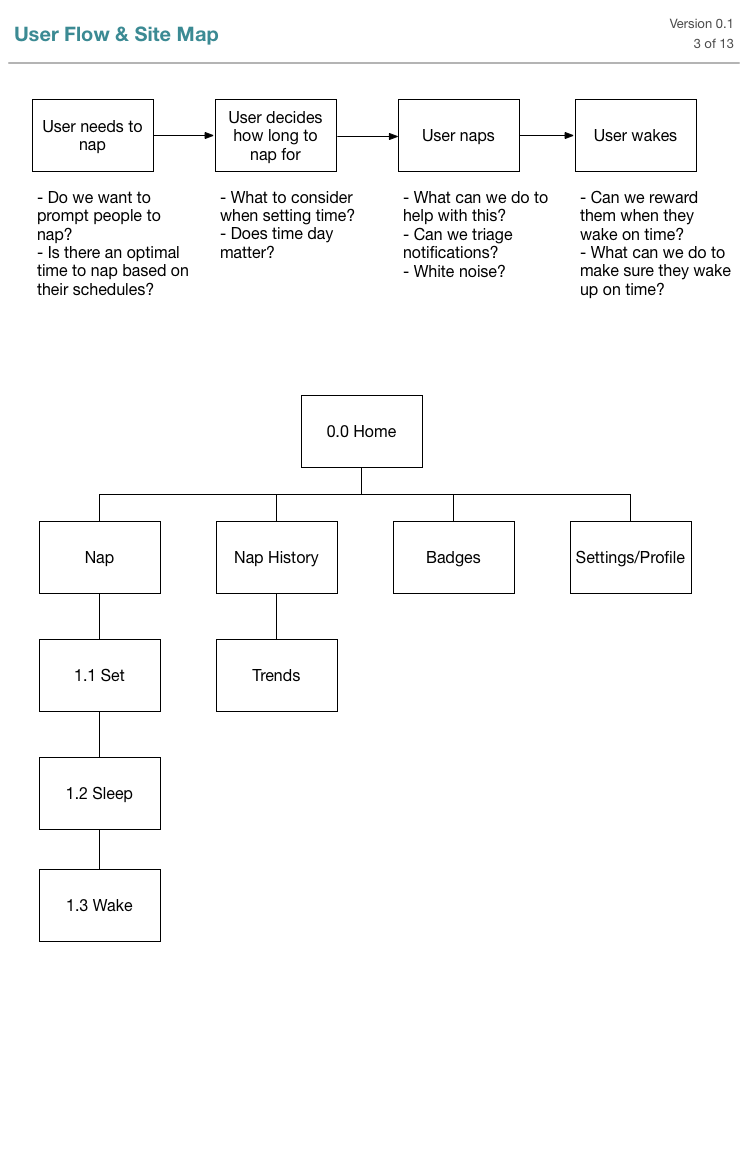Just-for-fun chindōgu
Project: A just-for-fun chindōgu that helps users take better naps.
Role: UX Strategy, UX Architecture, User Research
The problem
My design partner and I were looking to attack a design problem for fun. We wanted to create a chindōgu app. An app designed for a very specific purpose. Chindōgu is "the Japanese art of inventing ingenious everyday gadgets that seem like an ideal solution to a particular problem, but are in fact useless." (See Wikipedia).
We decided to tackle naps.
We knew through anecdotal experience that timing naps was a difficult problem. People we talked to often complained of too-short naps or too-long naps that led to grogginess and frustration. We decided to create an app that would help users set an alarm for the nap type applicable to their situation.
Project Highlights
- Just-for-fun: This project was a just-for-fun design exercise, so we could be as creative as we wanted to. We brainstormed what we'd look for in a Nap App and sketched out ideas without constraints.
- User Flows: We mapped out the user journey for how a user might approach a nap. This journey fed directly into the design of the screens and architecture of the experience.
- Road Map: Part of the design exercise was deciding what would be built and when. The design process focused on quick iterations providing immediate value to the user. To facilitate this, we road-mapped out what thought the key features might be and incorporated these features into the site map and architecture of the app.
- Concept: After a preliminary review of sleep literature, we decided that the app should be grounded in science. The app should also be playful and helpful.
We experimented with different interactions for selecting the time and plan to test these different interactions with users. We also experimented with how we can incorporate features that will encourage users to wake up on time from their naps, and to be mindful about the length of their naps. For example, we may ask users to pledge to complete a task after their nap to encourage them to wake up on time, or we may force the user to answer a skill-testing question to turn off the alarm to avoid continuous snoozing.
- Next Steps: Next, we plan to conduct user research to see how the features we've created appeal to real-world users. We'll then iterate and start building the Nap app.





